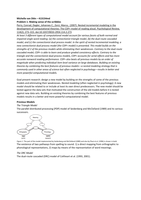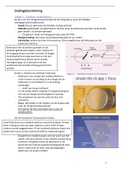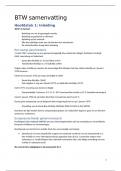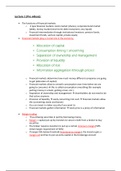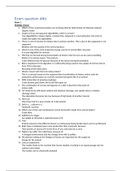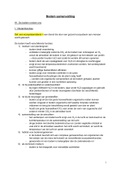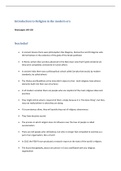Michelle van Diën – 413154md
Problem 1. Making sense of the scribbles
Perry, Conrad, Ziegler, Johannes C., Zorzi, Marco,. (2007). Nested incremental modeling in the
development of computational theories: The CDP+ model of reading aloud. Psychological Review,
114(2), 273–315. doi:10.1037/0033-295X.114.2.273
At least 3 different types of computational model account for various facets of both normal and
impaired single word reading: (a) the connectionist triangle model, (b) the dual-route cascaded
model, and (c) the connectionist dual process model. In the spirit of nested incremental modeling, a
new connectionist dual process model (the CDP+ model) is presented. This model builds on the
strengths of 2 of the previous models while eliminating their weaknesses. Contrary to the dual-route
cascaded model, CDP+ is able to learn and produce graded consistency effects. Contrary to the
triangle and the connectionist dual process models, CDP+ accounts for serial effects and has more
accurate nonword reading performance. CDP+ also beats all previous models by an order of
magnitude when predicting individual item-level variance on large databases. Building on existing
theories by combining the best features of previous models—a nested modeling strategy that is
commonly used in other areas of science but often neglected in psychology—results in better and
more powerful computational models.
Goal present research: design a new model by building on the strengths of some of the previous
models and eliminating their weaknesses. Nested modeling (often neglected in psychology): A new
model should be related to or include at least its own direct predecessors. The new model should be
tested against the data sets that motivated the construction of the old models before it is tested
against new data sets. Building on existing theories by combining the best features of previous
models results in a better and more powerful computational model.
Previous Models
The Triangle Model
The parallel distributed processing (PDP) model of Seidenberg and McClelland (1989) and its various
successors.
Figure 1. The part of the model implemented by Seidenberg and McClelland (1989) and also by Plaut et al. (1996) is shown in bold.
The existence of two pathways from spelling to sound: 1) a direct mapping from orthographic to
phonological representations, 2) maps by means of the representation of word meanings.
The DRC Model
The dual-route cascaded (DRC) model of Coltheart et al. (1993, 2001).
Problem 1. Making sense of the scribbles
Perry, Conrad, Ziegler, Johannes C., Zorzi, Marco,. (2007). Nested incremental modeling in the
development of computational theories: The CDP+ model of reading aloud. Psychological Review,
114(2), 273–315. doi:10.1037/0033-295X.114.2.273
At least 3 different types of computational model account for various facets of both normal and
impaired single word reading: (a) the connectionist triangle model, (b) the dual-route cascaded
model, and (c) the connectionist dual process model. In the spirit of nested incremental modeling, a
new connectionist dual process model (the CDP+ model) is presented. This model builds on the
strengths of 2 of the previous models while eliminating their weaknesses. Contrary to the dual-route
cascaded model, CDP+ is able to learn and produce graded consistency effects. Contrary to the
triangle and the connectionist dual process models, CDP+ accounts for serial effects and has more
accurate nonword reading performance. CDP+ also beats all previous models by an order of
magnitude when predicting individual item-level variance on large databases. Building on existing
theories by combining the best features of previous models—a nested modeling strategy that is
commonly used in other areas of science but often neglected in psychology—results in better and
more powerful computational models.
Goal present research: design a new model by building on the strengths of some of the previous
models and eliminating their weaknesses. Nested modeling (often neglected in psychology): A new
model should be related to or include at least its own direct predecessors. The new model should be
tested against the data sets that motivated the construction of the old models before it is tested
against new data sets. Building on existing theories by combining the best features of previous
models results in a better and more powerful computational model.
Previous Models
The Triangle Model
The parallel distributed processing (PDP) model of Seidenberg and McClelland (1989) and its various
successors.
Figure 1. The part of the model implemented by Seidenberg and McClelland (1989) and also by Plaut et al. (1996) is shown in bold.
The existence of two pathways from spelling to sound: 1) a direct mapping from orthographic to
phonological representations, 2) maps by means of the representation of word meanings.
The DRC Model
The dual-route cascaded (DRC) model of Coltheart et al. (1993, 2001).

